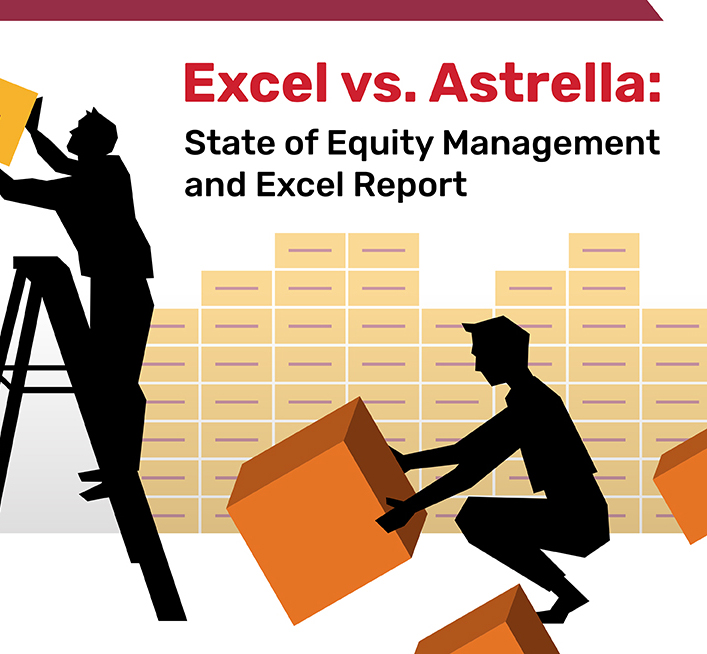In the fast-paced world of startups and growth-stage companies, making informed decisions is crucial for success. Cap table analytics provides the insights needed to navigate the complex financial landscape. This blog post delves into the significance of cap table analytics, exploring its various aspects and demonstrating how it can be leveraged to drive strategic growth and decision-making. From understanding the basics of cap tables and critical metrics to visualizing data for clarity and utilizing analytics for strategic advantage, this comprehensive guide equips entrepreneurs and business leaders with the knowledge and tools to gain a competitive edge.
Understanding Cap Tables: The Basics
In startups and growth-stage companies, where every decision carries significant weight, cap table analytics is invaluable for gaining strategic insights and driving success. At its core, a cap table, also known as a capitalization table, provides a comprehensive snapshot of a company’s ownership structure and equity distribution.
Beyond their role as a mere record-keeping tool, cap tables hold immense significance in a company’s financial management and strategic decision-making processes. They play a pivotal role in tracking and managing equity ownership, ensuring transparency and accountability among stakeholders. Cap tables:
- Empower founders and investors to make informed decisions regarding fundraising, dilution, and exit strategies
- Facilitate mergers and acquisitions by clearly understanding ownership structures and simplifying negotiations
- Offer detailed records of shares, ownership percentages, and equity allocation among founders, investors, and employees
Understanding the intricacies of cap tables is paramount for financial professionals involved in startups and growth-stage companies. It equips them with the knowledge and insights to navigate the complex financial landscape, make strategic decisions, and position their companies for long-term success.
Key Metrics and Ratios for Analysis
Key metrics and ratios derived from a cap table analysis provide valuable insights into a company’s financial health and performance.
These metrics include:
- Shareholder dilution measures the decrease in the ownership percentage of existing shareholders due to the issuance of new shares. By monitoring dilution, companies can ensure a fair equity distribution and prevent excessive dilution that could erode the value of existing shareholders’ investments.
- Weighted average cost of capital (WACC) represents a company’s average cost of capital. WACC considers the cost of debt and equity financing, weighed by their respective proportions in the capital structure. By calculating WACC, companies can assess the overall cost of capital and make informed decisions regarding capital allocation and investment opportunities.
- Fully diluted share count is another key metric that reflects the total number of shares that would be outstanding if all convertible securities, such as options, warrants, and preferred shares, were exercised or converted into common stock. This metric is crucial for determining the potential dilution of ownership and the impact on earnings per share.
- Runway analysis is another essential aspect of cap table analysis. It involves projecting the company’s cash flow and expenses to determine the remaining time before additional funding is required. Companies can proactively plan their fundraising strategies by conducting runway analysis and ensuring they have sufficient capital to sustain operations and achieve their growth objectives.
Cap table analysis also involves evaluating the distribution of equity among different stakeholders. This includes analyzing the ownership percentages of founders, investors, employees, and other shareholders. By understanding equity distribution, companies can assess the organization’s balance of power, voting rights, and decision-making authority.
Cap Table Analytics for Equity Compensation
Cap table analytics is a powerful tool that helps startups and high-growth companies effectively manage and analyze equity compensation plans. It plays a critical role in attracting and retaining top talent by providing valuable insights into the dilution impact, cost-effectiveness, and potential future value of equity compensation awards.
One key aspect of cap table analytics is assessing the dilution effect of various equity compensation plans. By meticulously modeling the issuance of new shares and analyzing their impact on existing shareholders’ ownership percentages, companies can make well-informed decisions about the appropriate level of equity compensation, ensuring that dilution is kept within acceptable limits. Cap table analytics also enables companies to evaluate the cost-effectiveness of their equity compensation programs by comparing the cost of equity compensation with the value generated by the employees who receive it.
Furthermore, cap table analytics empowers companies to forecast the potential future value of equity compensation awards. By meticulously projecting the company’s growth trajectory and future valuation, companies can accurately estimate the potential upside for employees who receive equity compensation, allowing them to make informed adjustments to their compensation plans. Additionally, cap table analytics is crucial in identifying and mitigating potential tax implications associated with equity compensation, ensuring compliance with tax laws and regulations.
Cap table analytics is essential for managing equity compensation plans and ensuring compliance with regulatory requirements and accounting standards. By maintaining accurate and up-to-date cap tables, companies can transparently disclose equity compensation information to investors, shareholders, and regulatory bodies. This transparency fosters trust and credibility, enhancing the company’s reputation and facilitating successful capital raises. Cap table analytics also facilitates the preparation of financial statements and the calculation of financial ratios directly or indirectly impacted by equity compensation.
In conclusion, cap table analytics is an indispensable tool for startups and growth-stage companies to effectively manage equity compensation plans, attract and retain top talent, and ensure compliance with regulatory and accounting requirements. It provides valuable insights that help companies make informed decisions, mitigate risks, and optimize their equity compensation strategies, ultimately contributing to their long-term success and growth.
Visualizing Cap Table Data for Clarity
Visualizing cap table data is crucial for simplifying complex information and enhancing decision-making.
- Charts and graphs are powerful tools for illustrating ownership percentages and dilution effects. Bar charts can effectively display equity distribution among various stakeholders, while pie charts provide a quick overview of ownership proportions. Line graphs can depict dilution over time, allowing companies to monitor the impact of equity issuances on shareholder ownership.
- Heat maps add another dimension to cap table analysis by highlighting significant changes and trends. They enable users to quickly identify areas of concern or growth, facilitating proactive decision-making. For instance, a heat map of historical ownership percentages can reveal patterns of dilution or concentration, prompting companies to adjust their equity compensation strategies accordingly.
- Waterfall charts are another valuable tool for visualizing the impact of various events on the cap table. They provide a step-by-step breakdown of changes, such as new issuances, repurchases, or conversions, and their effects on ownership percentages. This visual representation simplifies complex transactions and helps stakeholders understand the consequences of different scenarios.
By leveraging these visualization techniques, companies can transform raw cap table data into actionable insights. Visualizing cap table data empowers stakeholders to make informed decisions, identify potential risks, and optimize equity compensation strategies, ultimately contributing to the success and growth of the organization.
Leveraging Analytics for Strategic Decision-Making
Cap table analytics empowers startups and growth-stage companies to make strategic decisions that drive growth and success. One crucial area where cap table analytics plays a pivotal role is evaluating investment opportunities. Companies can make informed decisions about accepting or rejecting investment offers by analyzing the cap table and understanding the current ownership structure, dilution impact, and potential future value of equity. This analysis helps ensure that the terms of the investment align with the company’s long-term objectives and that the dilution to existing shareholders is within acceptable limits.
Another critical aspect where cap table analytics proves invaluable is assessing potential dilution. By meticulously modeling various equity compensation scenarios and analyzing their impact on ownership percentages, companies can proactively manage dilution and make strategic decisions to minimize its effects. This enables companies to balance attracting and retaining top talent through equity compensation while preserving shareholder value.
Furthermore, cap table analytics enables companies to optimize capital allocation by identifying areas where equity compensation can be used effectively. By analyzing the cost-effectiveness of different equity compensation plans and comparing them with alternative forms of compensation, companies can allocate their capital resources wisely, ensuring that they maximize the value generated from equity compensation.
Lastly, cap table analytics is crucial in managing and forecasting future equity needs. By projecting the company’s growth trajectory and analyzing the potential future value of equity compensation awards, companies can proactively plan for future equity issuances and ensure sufficient equity is available to meet their strategic objectives. This forward-thinking approach allows companies to avoid potential cash flow issues and dilution concerns, positioning them for sustained growth and success.
Conclusion
In conclusion, cap table analytics is pivotal in the success of startups and growth-stage companies. By providing valuable insights into dilution impact, cost-effectiveness, and potential future value, cap table analytics empowers companies to make well-informed decisions regarding equity compensation. This, in turn, helps attract and retain top talent, a crucial factor in driving growth and innovation.
Cap table analytics is essential for startups and growth-stage companies seeking long-term success. By leveraging cap table analytics, companies can make informed decisions about equity compensation, optimize their capital structure, and ensure compliance with regulatory requirements, propelling their growth and success in a competitive business landscape.
- Adam Jaqueshttps://astrella.com/blogs/author/thoughtsource/
- Adam Jaqueshttps://astrella.com/blogs/author/thoughtsource/
- Adam Jaqueshttps://astrella.com/blogs/author/thoughtsource/
- Adam Jaqueshttps://astrella.com/blogs/author/thoughtsource/






























































































































